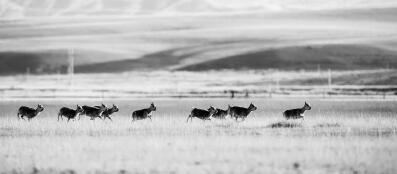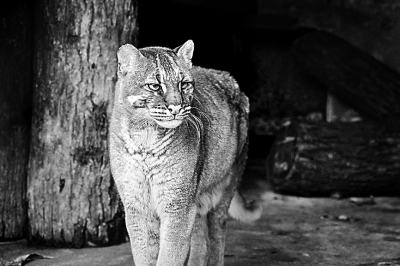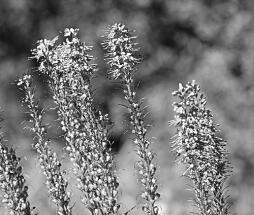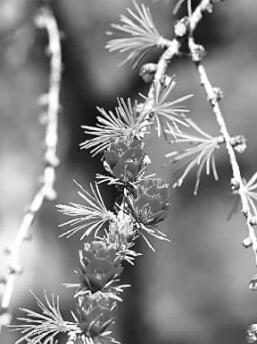

In January 2018, the only South China Golden Cat in the global zoo died in Hangzhou Zoo. Li Jian photo/bright picture



The existing list of species protection in China has not been systematically updated in the past 20 years. The list of national key protected wild animals was promulgated in 1989, and the list of national key protected wild plants (the first batch) was promulgated in 1999, and it has only been fine-tuned once so far; The List of National Key Protected Wild Plants (Second Batch) has been in the state of "discussion draft" and has not yet been officially promulgated.
The past two or three decades have witnessed the fastest economic development and urbanization in China, especially in the eastern and southern parts with high population density. Many natural habitats have been developed and changed, and resource utilization and human activities have intensified, resulting in habitat loss and fragmentation, which has greatly reduced the distribution and number of wild animal populations.
The Yangtze finless porpoise, once affectionately called "Jiang Pig" by the residents along the Yangtze River because of its naive and extremely common behavior, has rapidly decreased in population in the past 20 years, from 2,700 in 1991, 1,800 in 2006 and 1,050 in 2012 to less than 1,000 now — — This figure makes people who care about the protection of finless porpoises feel worried.
Following the functionally extinct baiji, the Yangtze finless porpoise has been known as the "giant panda in the water" for more than 10 years, and the recent related research has even divided the Yangtze finless porpoise into an independent species. However, the "giant panda in the water" has not been treated as a giant panda: in the list of key protected wild animals in China, the finless porpoise has not changed since it was designated as a second-class protected animal in 1989. Although experts and conservation organizations keep calling for upgrading, the Ministry of Agriculture and the State Council have issued documents to strengthen the protection of finless porpoises, but the adjustment of the list involves the coordination and unification of various departments in charge of wildlife protection, so it has not been realized.
The lag of protection level cannot be said to have no influence on the living conditions of Yangtze finless porpoises today.
The Red List of Endangered Species published by IUCN divides the endangered species into nine grades, which are evaluated and updated by experts all over the world about every five years. It also includes the evaluation results of China species regularly organized by the National Endangered Species Science Committee of China, that is, the Red List of China Species. The rating of Yangtze finless porpoise in IUCN Red List was "endangered" in 2000, and it was upgraded to "extremely endangered" in 2013, only one step away from "extinction in the wild".
China Nature Watch 2016, an independent analysis report jointly issued by a number of nature conservation agencies and the Research Center for Nature Conservation and Social Development of Peking University, pointed out that the IUCN Red List involves threatened species in China (including critically endangered, endangered and vulnerable), and 405 of them are not included in China’s protection list; However, 197 species in China’s protected list are "non-endangered" species in the IUCN Red List — — This means: on the one hand, a considerable number of endangered species are not protected by Chinese laws; On the other hand, some species that are not endangered may occupy limited conservation resources.
Specifically, there are the following situations:
First, it has been endangered for a long time but has never been included in the list. For example, the spoonbill snipe is a migratory bird passing through the eastern and southern coastal beaches of China. At present, the population in the world is estimated to be less than 100 pairs, and the habitat along its migration route, especially the development of coastal wetlands in East Asia, is the main reason for the extreme endangerment of this species. The IUCN Red List assessed it as endangered in 2004, and soon adjusted it to extremely endangered in 2008. However, this species was not included in the list of key protected animals in China, but only appeared in the List of Terrestrial Wild Animals Protected by the State (referred to as the "Three Lists").
Second, in the past 20 years, it has become endangered from no danger. For example, the well-known "sparrowfinch", the yellow-breasted flounder, still had a huge population and was widely distributed in the 1990s. In 2000, it was assessed as a non-endangered species in the IUCN Red List, and then its population plummeted due to excessive killing and eating and the large occupation of rice fields in its main habitat, and it was assessed as extremely endangered in 2017. At present, the sparrows are not listed in the List of National Key Protected Wild Animals.
Third, it has been included in the protection list, but the level is lower than the actual endangered situation. In addition to the Yangtze finless porpoise, another example is a species unique to China — — Yellow-lipped fish is evaluated as extremely dangerous in IUCN red list. But like finless porpoises, yellow-lipped fish is only Grade II in the List of National Key Protected Wild Animals. Yellow-lipped fish is one of the rarest species in the family Sciaenidae, with low protection rating, serious lack of public concern and national protection; In addition, some news media reported positively that fishermen caught yellow-lipped fish and sold it at a sky-high price, which aggravated the pressure of overfishing on this species.
Fourth, the list of the second batch of key protected plants has been delayed, and a number of endangered plants cannot be effectively protected. More than 2,000 species of plants threatened with extinction in the "second discussion draft" have not been protected by law due to disputes over jurisdiction by several competent authorities. Most of these plants have great economic value, so the wild population is over-utilized. For example, there are no restrictions on the mining and trading of wild ginseng in China, and sometimes it is even encouraged by individual news media. The situation is similar to that of wild Dendrobium candidum and Dendrobium huoshanense.
Fifth, some species endemic to China, but not endangered, are listed in the protection list. For example, Davidia involucrata, clover and Tibetan wild donkey are all national first-class protected species, but the number of wild populations is very large. According to China Nature Watch 2016, the protection of these species is improving.
China Nature Watch 2016 also assessed the protection status of all species in the current List of National Key Protected Wild Animals/Plants and all China species (1085 in total) on the threatened list in the IUCN Red List from 2000 to 2015. The results show that only 102 species have improved, 738 species have deteriorated, and the remaining 245 species lack information.
It can be seen that the outdated list leads to the lag of law enforcement, which is one of the reasons for the deterioration of the protection of quite a few threatened species. There are many reasons why the catalogue has not been updated, and the lack of species information, especially the reliable information of population number, actual distribution and change, is only one of them. With the country’s attention to species protection and the promotion of the whole society’s awareness of protection, especially the opportunities for the general public to participate in natural observation of birds and beasts are increasing and deepening, and the information gaps are being filled step by step. Another major obstacle affecting the updating of the directory is the deadlock caused by the difficulty in coordinating multi-sector management. It is expected that the integration of natural resource management departments will help solve the problem of multi-sector management of wildlife protection. In fact, the People’s Republic of China (PRC) Wildlife Protection Law (Revised Draft), which came into effect on January 1, 2017, has written into the law that the list of protected animals should be updated every five years. Therefore, it is imperative to update the list as soon as possible.
For the adjustment of the list, we suggest to establish an evaluation standard based on experts and scientific data on the basis of referring to the research reports such as IUCN Red List of Endangered Species, China Red List of Species and China Nature Watch 2016, and comprehensively sort out and rate the species in China, so as to adjust the protection level. For example, the IUCN Red List can include endangered and extremely endangered species, and the species with a score lower than -2 (inclusive) in the reference of China Nature Watch 2016 can be adjusted as national first-class key protected species; Adjust (or reserve) flagship species such as giant panda, snow leopard and Chinese white dolphin, umbrella species and top predator species in the ecosystem as national first-class key protected species; The species in the discussion draft of "List of National Key Protected Wild Plants (Second Batch)" will be officially promulgated to make it legally effective. In principle, non-endangered and low-endangered species will not be removed from the list, but only downgraded. For example, if the species in the current protection list are non-endangered and near-endangered in the IUCN Red List, and the score in China Nature Watch 2016 is higher than -1 (inclusive), it will be adjusted to the national second-class key protected species; Extinct species are indicated separately; Remove the taxonomically proved species (such as heterophylla japonica) from the list.
We earnestly hope that the "Updated List of National Key Protected Species" will be put on the legislative agenda as soon as possible and promulgated as soon as possible, so that all the truly endangered species can be protected by law.
(Author: Lv Zhi Gu Lei, professor of Nature Conservation and Social Development Research Center of Peking University, lecturer of Capital Normal University and head of nature observation project of Shanshui Nature Conservation Center)
关于作者